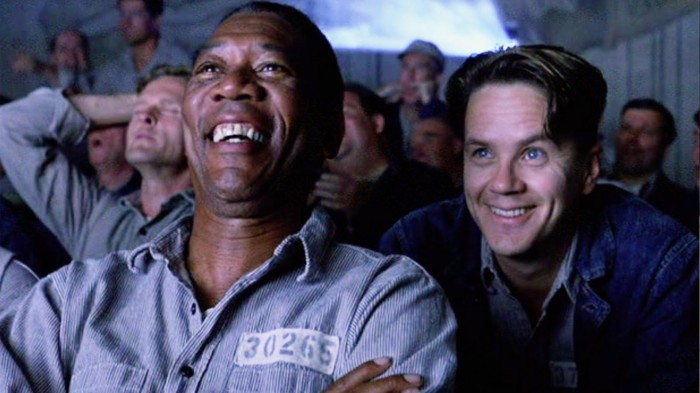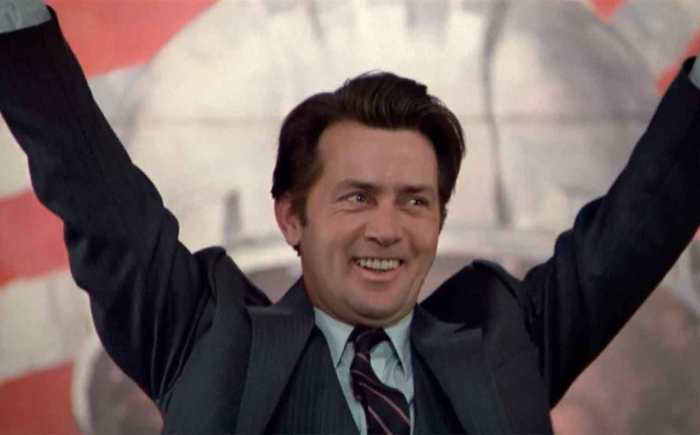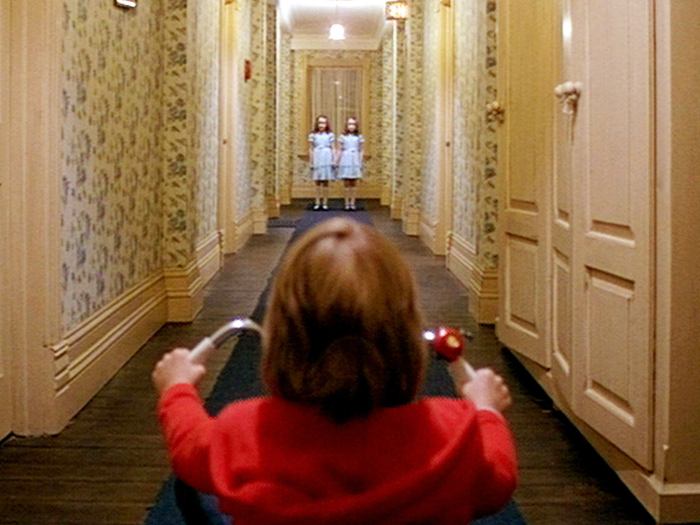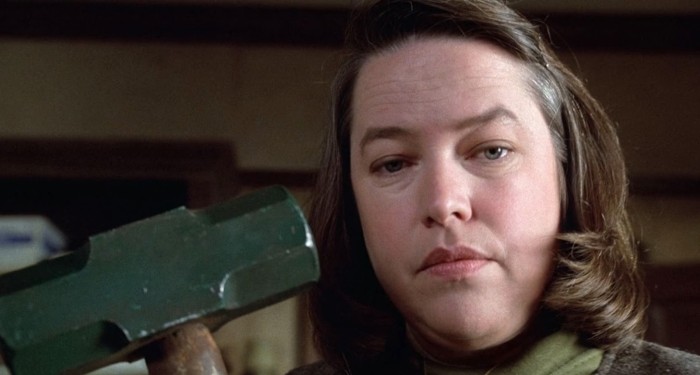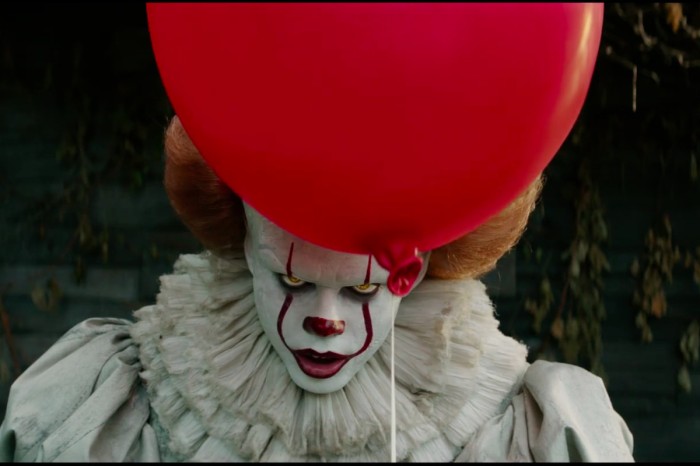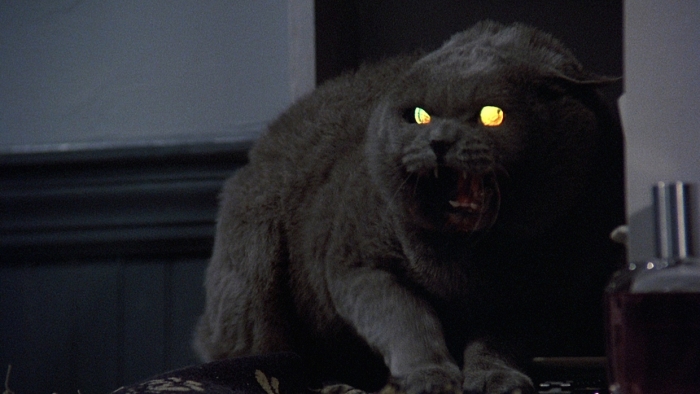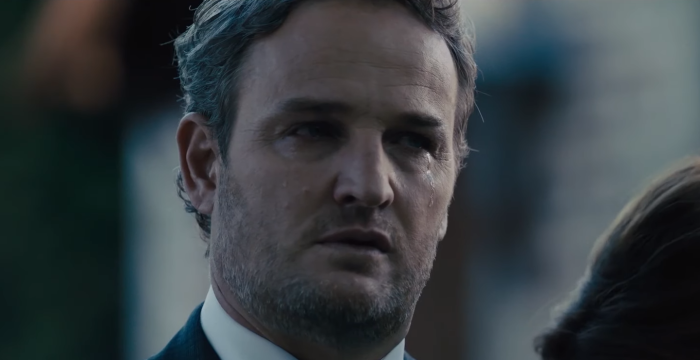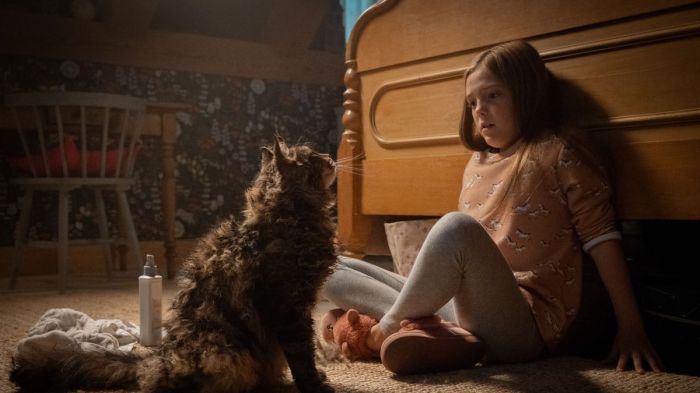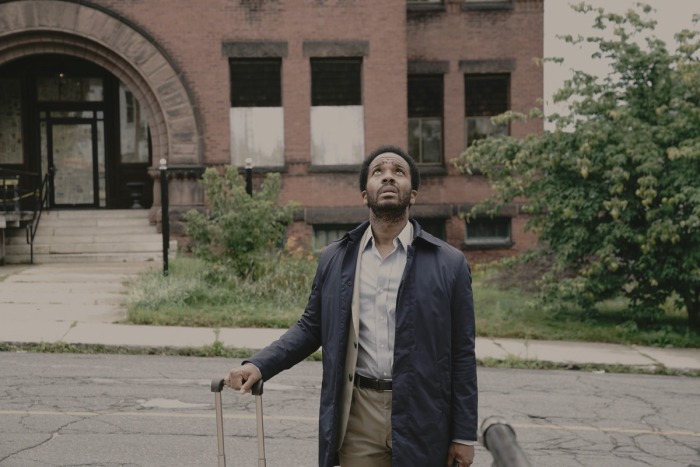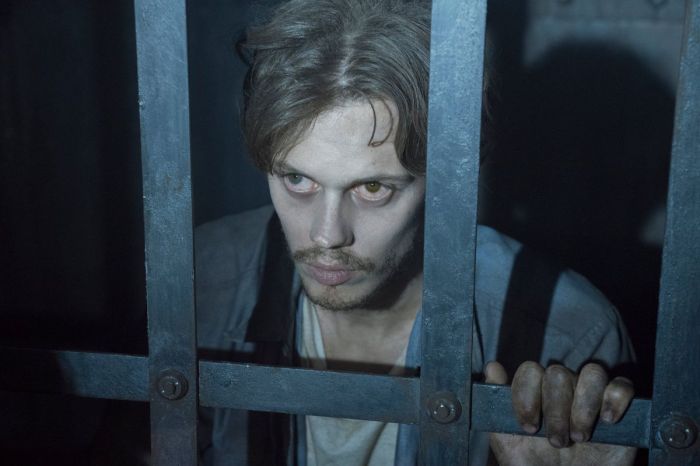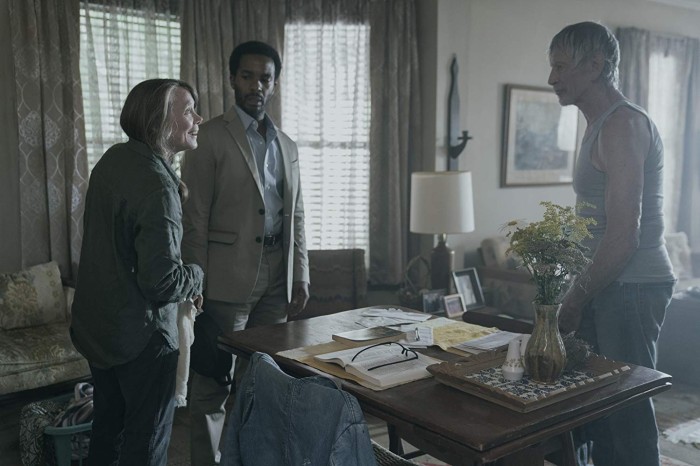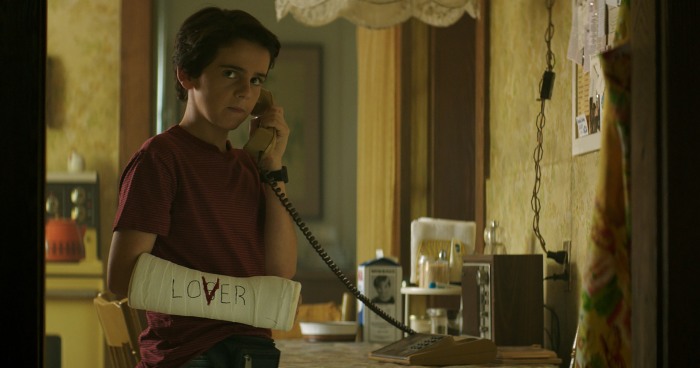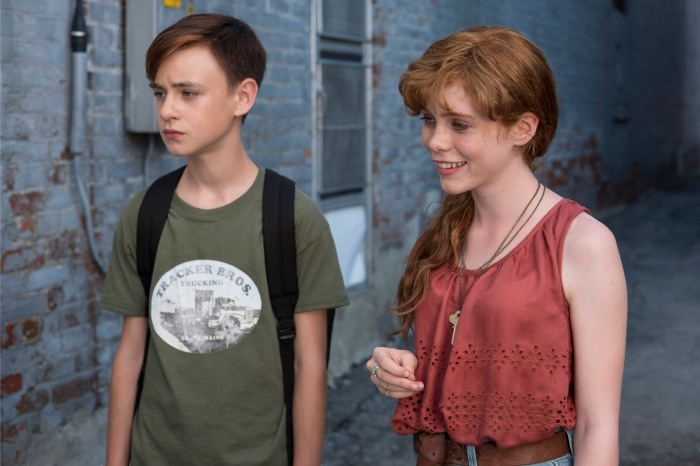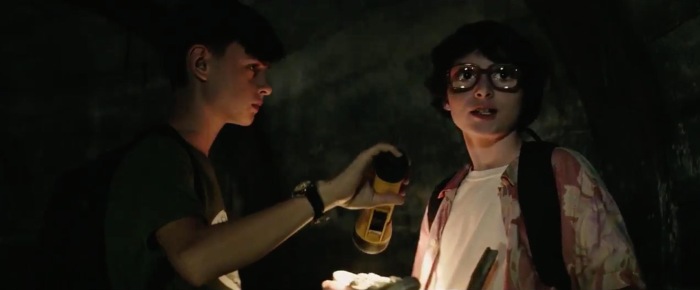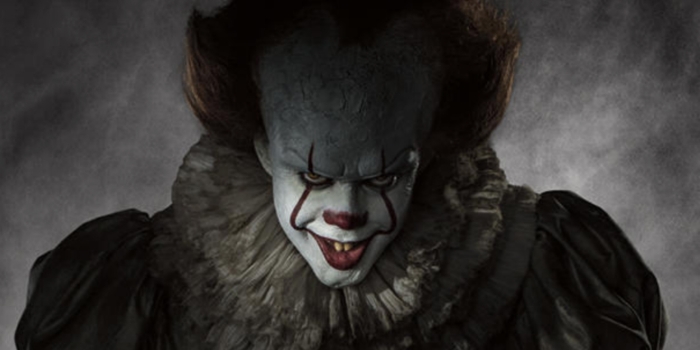As is the case with countless institutions currently, these are strange times here at Tuesdays with Cory, and for lack of both theatergoing capability and streaming options that interest me, I suspect that I’ll spend the next few weeks (at least) doing deeper dives into some of my favorite movies and what I feel makes them good. This week I’m starting with The Shawshank Redemption, the 1994 gem from Frank Darabont that you’ve surely heard about already, if only because it’s the top rated movie on IMDb. Ironically, the film – which is based on a Stephen King short story – was initially a box office failure, only ballooning in popularity during its rental phase in 1995. Nowadays, of course, it’s on USA or TNT just about once a month, and for good reason, but I want to talk about one particular aspect of The Shawshank Redemption that I think makes it dramatically interesting, and it’s an aspect that I think sets it apart from many of its contemporaries. Based on the title, you can probably surmise at this point that I’m referring to its use of the flat character arc.

Hope is a good thing, and no good thing ever dies.
Character arc is something you hear about a lot if you’re even peripherally interested in drama and the theory behind it, with the basic idea of course being that the main character (protagonist, hero, etc.) experiences some kind of change throughout the story being told, with this change – gradual or otherwise – culminating in some kind of psychological or moral revelation at the end. In more character-driven stories in particular, this revelation forms the climax of the story, as it reveals the truth behind the lie that the character believes and has made many mistakes while believing. But what about a character like Andy Dufresne, a character who overall does very little changing throughout his time at Shawshank, instead affecting change in others and in his surroundings with his constant mantra of positivity? As this excellent video essay describes it in the context of the wildly different Paddington 2, the main character in The Shawshank Redemption instead has a flat arc, not to be confused with a positive or negative one. I shouldn’t characterize Shawshank as being incredibly unique in this regard, as there are plenty of other well-known movies and franchises (Back to the Future and The Hunger Games are two prominent examples), but it’s an aspect of these movies that I don’t think is typically thought of when trying to describe what makes them good, or better yet, which parts of them stick in your mind.

I have no idea to this day what those two Italian ladies were singing about. Truth is, I don’t wanna know.
Because in my experience, when I think about Shawshank, or when others do, they don’t first think about Tim Robbins or Andy Dufresne. They’re more likely to think about Morgan Freeman‘s Red – and sure, you might be able to chalk that up mostly to an excellent use of his legendary larynx in near-constant voiceover, but I think some small sliver of that is also owed to the fact that he’s the movie’s actual vehicle for change. I wouldn’t go so far as to say The Shawshank Redemption is a movie primarily about him, nor would I say that he’s the “hero” or protagonist of the movie (I would argue that this is the case for the source material, though – in the novella, Red is the sole narrator), but the movie’s primary self-revelatory moment – in which Red basically tells a parole board to go screw themselves, only to be rewarded by his honesty and frankness with freedom – belongs pretty much solely to him. Red begins playing his role in the events of The Shawshank Redemption as a man with little hope, or better yet as a man who finds hope dangerous within the slowly institutionalizing walls of the prison. Meanwhile, old Andy – often surreptitiously so, to be fair – clings to the power of hope throughout, from his first night as the strong silent type to his slog through literal shit at the end, imparting it upon others like Red while grappling with it in only the most occasional of moments. By the final act, especially when coupled with the perspective shift after Andy’s departure from Shawshank, Red certainly feels like the protagonist. Quite the switcheroo.
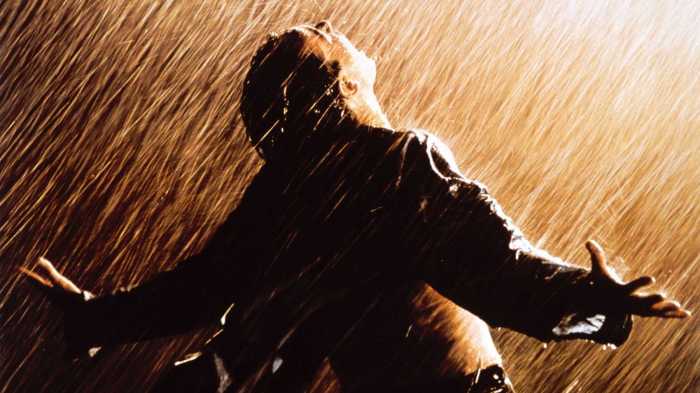
That feeling when you take a shower after your 20-minute workout and feel like the lord of all creation.
And sure, maybe the climax of the movie as far as you could define it still belongs to Andy, coming at the moment when he finally achieves his escape, holding out his hands to feel the rain on his bare skin as Thomas Newman’s score swells triumphantly, but it’s hard to characterize this as a particularly powerful change to Andy’s persona. Overcoming a 20-year obstacle? Sure, and there’s certainly dramatic import in that. Changing? Not really. To put it a different way, and to couch my argument more firmly in the word “change,” The Shawshank Redemption is not about a change that takes place within Andy, even if the occasional doubt creeps into his psyche towards the end. Instead of it being about what he learns, it’s about what others learn from him. The Warden learns that his judgement cometh (and that right soon) when Andy outplays him, the entire prison system learns about the value of persistence when Andy sends constant letters in hopes of getting a prison library, and in perhaps the most on the nose learning moment, Tommy gets his GED, owing largely to the efforts of a patient and willing teacher in Andy. The story focuses on Andy in that we the audience are anchored to the hope that Andy will never lose his way. Our attention isn’t kept by the fear that he won’t change to overcome the obstacles laid before him; our fear is that he will.

I like to think the last thing that went through his head – other than that bullet – was to wonder how the hell Andy Dufresne ever got the best of him.
There are a lot of things to which you could ascribe The Shawshank Redemption‘s (eventual) success. In fact, if you read Darabont’s novelization of the shooting script (and specifically the “Mutatis Mutandis” section featuring his closing remarks) you’ll find that the movie may have actually found its footing by rejecting a lot of the writing that was done before the cameras started rolling, flat arc or no. But what The Shawshank Redemption (along with other aforementioned films) shows is that replacing the lie the character initially believes with a truth that they believe throughout can be an effective dramatic tool, especially when paired with a strong cast of malleable secondary characters, a predominantly negative setting, and a misdirection-laced third act. What we get out of Andy’s struggle to teach others is the message that hope, as initially believed by the other inmates, isn’t a dangerous thing, but a good one, and it’s a message that it seems we need now more than ever.
What’s your favorite flat arc film? Talk to me, folks. In the meantime, I’ll cook something up for next week.





